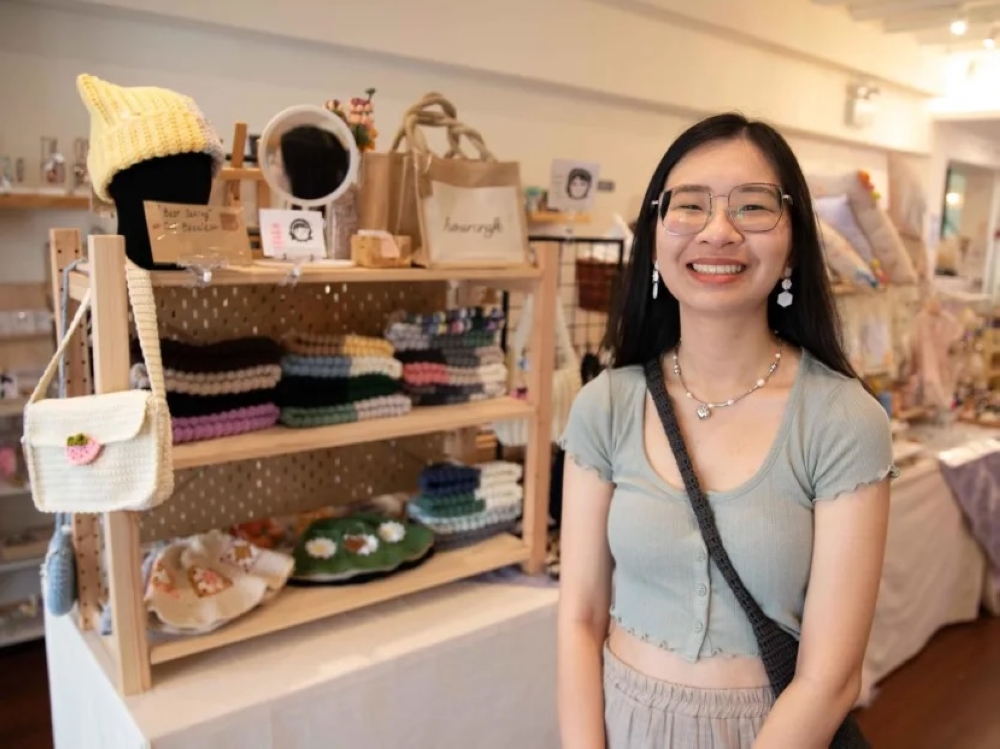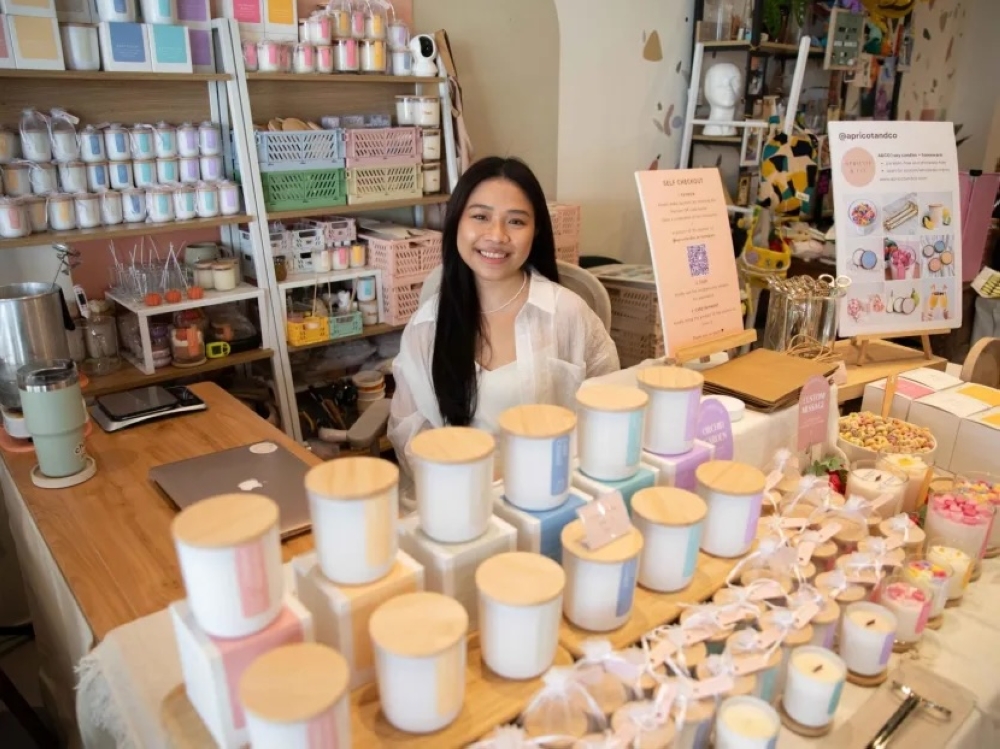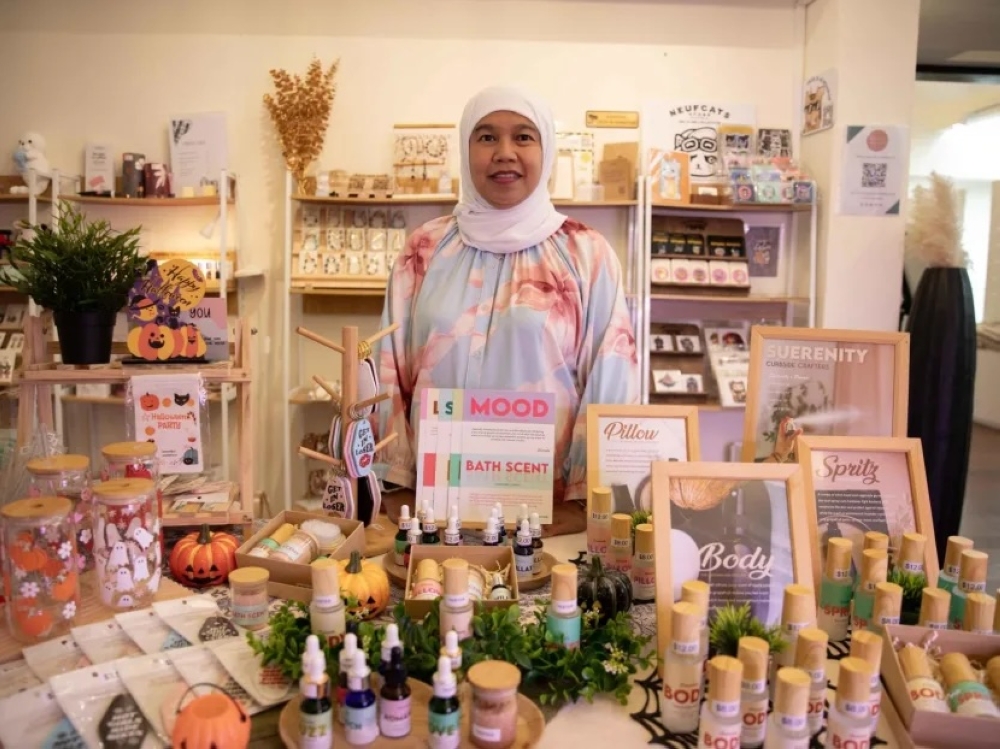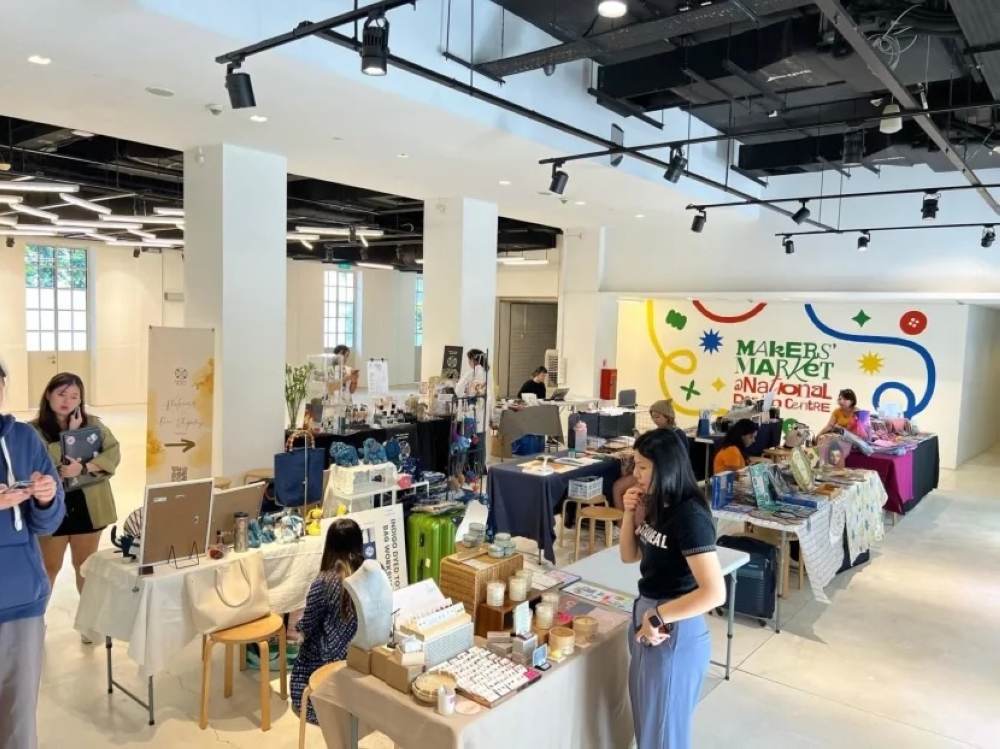SINGAPORE, Oct 8 — She taught herself how to crochet by watching YouTube videos during the Covid-19 circuit breaker period. Now, 22-year-old university student Bernice Lee and her family earn up to S$3,000 (RM10,401) a month from selling homemade crocheted items.
Since last year, much of their business for their store called Hourcraft has been from their booth at Curbside Crafters, a retail space in Kampong Glam that rents space to small businesses.
Their 1.4m by 70cm booth table is packed with keychains and cup holders made by Lee’s mother, beaded wares added by her younger sister and trending items like beanies with cat ears contributed by Lee herself.
Even her 12-year-old brother, who is taking his Primary School Leaving Examination this year, makes crocheted stuffed small creatures for the family business.
Lee is one of many crafters who have grown hobbies or passions picked up during the pandemic into what is commonly referred to as a “side hustle”, a small business people do alongside their main occupation.
While Covid-19 has upended many local businesses, some crafters and companies that host small businesses on their platforms told TODAY that the pandemic had also been a boon for those who picked up new skills.
The pandemic was one reason cited for the downfall of home-grown retailer Naiise by its founder, Dennis Tay. Naiise previously had as many as six physical stores in Singapore and Malaysia featuring products by local artisans and designers, but closed its last Singapore store at Jewel Changi Airport in 2021, following a series of financial troubles and late payments to vendors.
Kent Teo, the founder and chief executive officer of Invade, a company that runs events such as Artbox and Makers’ Market, said it had a 95 per cent drop in revenue during the pandemic.
Yet, since Covid-19 restrictions eased, Teo has seen an almost three times increase in the number of makers. He also said that more than half of Invade’s vendors sell more “sophisticated” items or things that are more complicated to make.
He attributed this to increased youth interest in making crafts, especially since many had more time at home with companies adopting work from home arrangements.
Since Crane began in 2019, it has offered co-working spaces for its members, who are mostly entrepreneurs seeking a place to work, run workshops and host events.
During the pandemic, Meihan Boey who is the events manager of Crane Living, its retail arm, said that many Crane members began to develop their side hustles much more.
Crane Living currently stocks items from small businesses at its four branches and various pop-up spaces and hosts weekend markets in its spaces.
In addition to spaces such as Curbside Crafters, which opened in 2021, other flea markets and spaces housing a range of small local businesses such as Thryft Weekend Garden and Hikari Space have recently joined the fold.
This weekend (Oct 7-8), Public Garden, a consumer trade show first held in 2011, returned to Suntec City Convention Hall, featuring independent brands from Singapore and around the world.

Lower rental, flexible arrangements
Crafters and companies TODAY spoke to said that much of the appeal in pop-up spaces and flea markets is due to their low cost and flexibility.
“Running a business is very expensive, and much of that is rental. If you’re renting a physical space, you have to sit there and hope customers come to you, which is very difficult if you’re just starting out and have no idea if your market can sustain that,” said Boey.
Pop-up spaces offer comparably lower rental rates, with leases available from as short as one day. Vendors can also choose from multiple locations and a range of booth sizes.
Lee said Hourcraft is under Curbside Crafters’ consignment programme that allows her to stock products for a rental fee starting at S$350 a month with a 5 per cent commission rate.
This model works well for her family, as she and her siblings are all still in school and her mother is a housewife, which make it hard to man a physical booth more than once or twice a month.
Also at Curbside Crafters is 28-year-old Samantha Fong, who left her job to pursue her hand-poured soy candle business Apricot and Co full time in January this year.
She uses her booth as both a retail front and a workspace, as it is where she makes her candles.
Her arrangement with Curbside allows her flexibility, such that when she is unable to physically be at her booth, Curbside staff members will help her attend to customers.

Samantha Fong who runs soy candle business Apricot and Co at Curbside Crafters on Oct 6, 2023.
Physical space for a ‘human touch’
But why don’t these small businesses simply operate online? Crafters believe that having a physical space enables a “human touch”, allowing more people to see their products.
“On Instagram, it’s very hard to get organic customers as the algorithm is hard to predict. In person, there will be passersby. If we were just online, we’ll miss out on so many other customers and opportunities that could be here,” said Lee from Hourcraft.
For Suliah Jamal, who owns a hand-blended oil and scented sprays business Suerinity, having an in-person front at Curbside Crafters for her products is essential, as customers are able to smell the scents and personally try the oils on their skin.
“When you’re there in person, you can engage in small talk, and when you introduce your product, people might buy more instead of one,” she said.
“Even if they don’t buy, some stop by my booth to talk, and I love to share my experience and my learning process.”
Customers can directly interact with makers and even get a chance to have a product customised for them, said Ashley Sim, a marketing associate at Curbside Crafters.
“It’s the human touch and service that is also special,” said Sim.

Teo said that sellers at Makers’ Markets get to hone their retail skills, such as learning how to display one’s products, interact directly with customers and build relationships with other merchants.
Agreeing, Boey from Crane Living cited the “family atmosphere” among vendors at the weekend markets. They are open to collaborations and exchange of ideas, and some even serve as each other’s first customers when the market opens.
When asked what’s next for her crochet business, Lee from Hourcraft said it is her family’s dream to open a store for their goods.
“After seeing so many young creators coming out and opening their own stores and sharing their experience, it really gives us more confidence to do it ourselves,” she said. — TODAY























